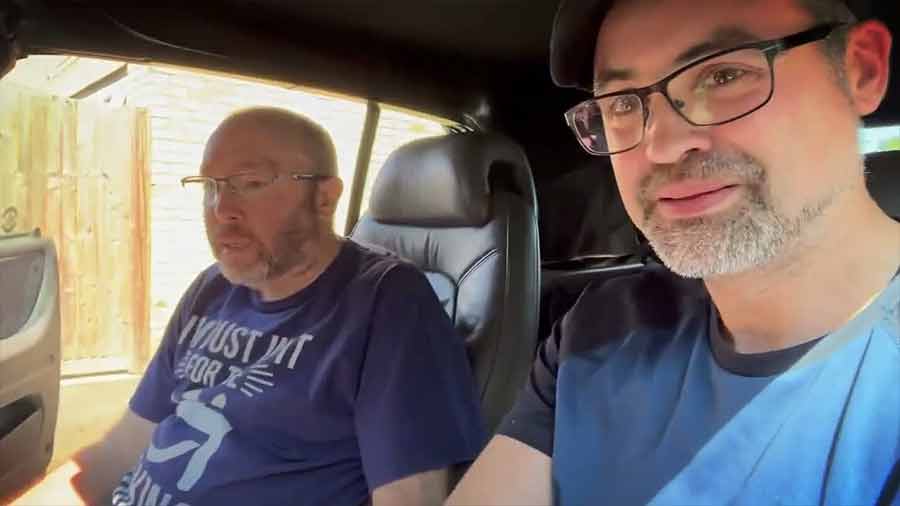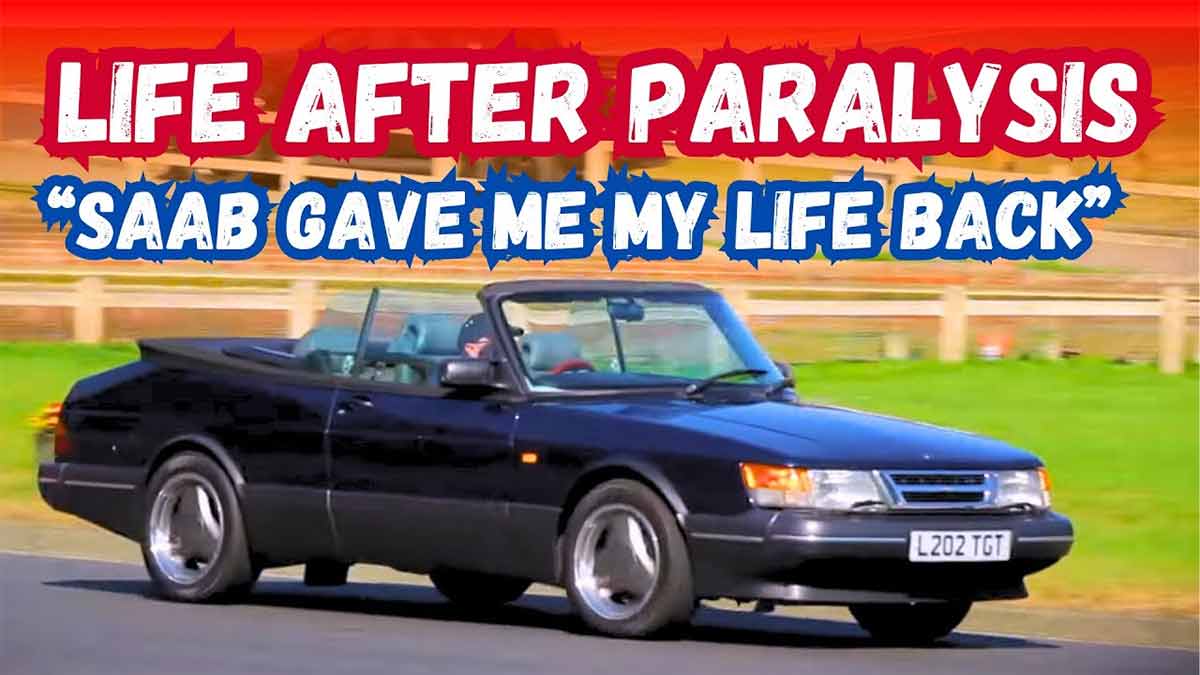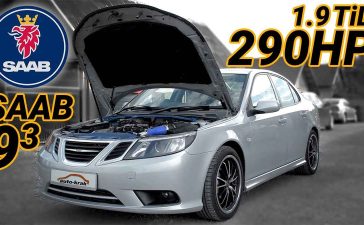This moving story comes from Peter Bruce’s TalkSteer series on the Saab Stories YouTube channel. In episode 17, Peter meets David, a man who lost the use of his legs but found a new sense of freedom behind the wheel of his dream car – a classic Saab 900 Convertible.
One morning, David woke up unable to move from the chest down. What began as numbness in his knee and tingling fingers turned out to be a rare spinal-cord tumor. Surgery and chemotherapy followed, but the damage was permanent. Overnight, life shifted from walking to wheels.
During rehab at Stoke Mandeville’s National Spinal Injuries Centre, David set one key goal: to get back behind the wheel. Driving had always been his greatest passion, and losing it felt like losing part of himself. That simple aim – to transfer from a wheelchair into a normal car – became the measure of recovery.
Choosing the Right Car – Familiar, Practical, and Truly Saab
Before his illness, David had owned a Caterham Seven for two decades, a car he adored but could no longer enter or drive. He needed something accessible, automatic, and emotionally connected to his past. The answer was clear: a classic Saab 900 Convertible.

He found a 1993 Saab 900 LPT Aero in Lemon Yellow — a color he remembered from showroom visits as a child. It offered four seats, a usable trunk for his wheelchair, and an automatic gearbox ideal for adaptive hand controls.
“The Saab just felt right,” he said. “It brought back a little of what I had before.”
The Setup – Simple, Mechanical Hand Controls
To drive again, David fitted push-pull hand controls: pulling the lever accelerates, pushing it applies the brake. A small switch on the lever handles turn signals, so his left hand can stay on the wheel. The system is entirely mechanical — just rods and levers — which keeps the car’s original character intact.
He jokes about it feeling like “lazy luxury”: “Why use my feet anymore? My hands do it better.”
Inside, the Saab’s layout helps — the low dashboard, solid seats, and door sill integrated into the door skin allow him to park close and transfer more easily using a banana board.
Back on the Road – Learning All Over Again
At first, every transfer was slow, every control awkward. But practice turned effort into instinct. Soon, the hand lever felt natural, and he could sense the automatic gearbox responding smoothly.
“It’s amazing how quickly your brain adjusts,” David explained during the drive. “After a few miles, it just feels normal again.”
The ride comfort of the 900 stood out — far better than the wheelchair-access van he used earlier, which rode high and harsh. In the Saab, he’s low, secure, and part of the car, not a passenger strapped in the back.
Family in the Passenger Seats
David’s biggest joy is sharing drives with his wife and daughters. Evening runs with the top down have become family moments again. “The kids love looking up at the stars,” he said. “It’s something they’d never experienced in a car before.”

The 900 also turned into a family restoration project. His daughters cleaned and reconditioned the leather seats, bringing back their soft gray tone. Next, they plan to retrim the door cards. “It’s great to see them take pride in it,” he smiled.
Gratitude and a New Normal
David knows what he’s lost — but he also knows what he’s kept. “I can feed myself, breathe for myself, and drive my Saab,” he said quietly. “Those are things I’ll never take for granted again.”
Now, each start-up is more than ignition. It’s proof that recovery can have wheels. The Saab 900 gave him independence, comfort, and a way to stay connected to who he was — and who he still is.
The Moment of Gratitude – And What It’s Not
Late in the drive, David says something that lands softly: he’s grateful for the things that still work – feeding himself, breathing on his own, time with his family in the front seat rather than “stuck in the boot” of an access van. It isn’t a hashtag. It’s a recalibration, the kind that lets you plan a summer around evening runs with the roof down and a re-trim day on the patio with adhesive, fabric, and a methodical teenager.
Gratitude here is an operating system, not a sermon. It’s the discipline to specify a control layout that suits his hands, the humility to choose comfort over peak boost, and the audacity to admit that the lever can feel like “lazy luxury.” That line says more about acceptance than any motivational poster ever could.
Credit Where it’s Due — The Storytelling That Keeps the Saab community Together
We’ve followed Peter Bruce’s Saab Stories long enough to recognize his fingerprints: patient questions, technical curiosity, and empathy for the human stakes. Peter consistently finds people whose Saab lives carry real weight, and this episode is among his best. Watch the interview above, then come back to the comments and tell us what detail in David’s 900 stood out to you — the steering wheel, the seat work, or that door-sill trick we can’t stop replaying:
A Closing Lap: What the 900 Gave Back
By the end, what did David recover? Not the old normal. Something better calibrated. A commute to the barbecue with the roof stowed, kids in the back discovering that night skies belong in cars, a workshop where leather breathes again, a trunk that accepts a folded wheelchair without drama, a neighborhood loop that reminds your right hand how to draw torque and your left how to keep time. He also gained a clear view of the horizon: projects lined up, mentors on speed dial, family in the car, Saab’s odd, humane engineering translating intention into motion.
If you’re new to this community, remember that Saab ownership has always been a conversation between design and daily life. Here, that conversation helped a driver insist on independence with precision, backed by a model that still understands fit, function, and the ways a good seat and a simple lever can bend the future a few degrees in your favor.











